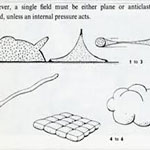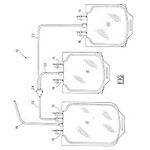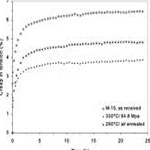Tensile Structure
Tensile structure is a type of construction of elements that only carries tension without
any compression or bending. It is far different from tensegrity that is actually a process
of a structural form with both of compression and tension. Basically tensile structure is a
type of thin shell structures. Most of the structures are supported by compression elements
such as oxygen, compression ring or beams. To cover a span of large distance attractively
tensile is being used, this is economically very efficient to use and for roofing any commercial
place this can be the wisest choice. In past it was being used in tents, later with advanced
technology it has established as an individual structural form of shading.
Advantages of tensile sheets over the other materials
It is being used vastly because of the power of protection against weather in publicly used spaces.
Such structures can span to large distances and can be aesthetically pleasing. One of the greatest
advantages is that it can be spanned over a large area without using lots of material. The space
enclosed by this fabric is stretched between light weight frames.
The fundamental features are:
 1. The complex 3-dimensional form of a canopy is achieved by cutting the fabric and bonding it together
for the desired 3d multidimensional shape. This fabric is loaded during the installation procedure. This
is known as pre-tension. The most efficient way to resist live loads like snow, wind etc is pre tension.
1. The complex 3-dimensional form of a canopy is achieved by cutting the fabric and bonding it together
for the desired 3d multidimensional shape. This fabric is loaded during the installation procedure. This
is known as pre-tension. The most efficient way to resist live loads like snow, wind etc is pre tension.
2. During the day the bright air and filtered lights are permitted.
3. Dust and dirt cannot settle.
4. The temperature within the structures gets reduced due to the reflection & the material against ultra violet rays.
5. Absorbs solar energy (4%-17%) and cuts down the heat load.
6. Require low maintenance compared to glass.
7. Minimal site interruptions since the membranes structures are manufactured in the factories.
8. No extension joints are needed since the membranes structures are merged into a single weatherproof skin.
9. For rapid construction it is perfect.
10. Compared to steel and concrete construction. Because of the reduced installation time it saves cost.
Tension is the force which is used to isolate molecular structures. With a minimal supporting structure it can
span over large area. Compared to conventional building materials like concrete and steel it is better for shapes,
longevity and strength. A tensioned fabric structure can curve equally to all directions giving a 3-dimensional
stability that is not elastic.
Types of coating:
 Lycra:
Lycra:
this is only for temporary structures. It offers outstanding elasticity with light weight and
lots of colors for different designs. This is fire retardant.
 PVC:
PVC:
amongst all fabric membrane polyvinyl chloride or PVC is the most used one. It is mainly
available in white but can be produces in a variety of color ranges depending on individual
projects. Depending on colors this flexible membrane reduces heat gain and keep interior
cooler too in warmer and harsh environment. Coated with 100% PVDF alloy it is good to
resist air pollutants, ultra violet rays and bad effects of weather. This economical
and environmental PVC has a life of 10 to 15 years approximately.
 PTFE:
PTFE:
The very best coat you can get over is PTFE or polytetrafluroethylene. Having no competition this is getting the top position because of the aesthetics and durability offered. It is neutral chemically and can bear up massive temperature from -730C to +2320C. With constant flexing or folding it does not get cracked or creased allowing designers to use it both of interior and exterior. Depending on the structure it is water proof and can resist ultra violet rays. Preventing 60% of lights it can withstand stain and exceptionally easy to clean. This highly translucent fabric is cost effective because of the low maintenance property.
Offering the same property like ice this is astonishingly frictional co-efficient which is the lowest among every material man has discovered. This is amazingly acid and chemical resistant and there is hardly any chemical that can damage it. For electrical insulation perhaps this is considered as the best material.
While PVC coated membrane lasts for 15-20 years PTFE coated can run more than 30 years. Available in various ranges of strength it depends on primary engineering based decision. Depending on thickness tensile strength ranges up to 150 kN per meter to 100-75 kN per meter. High grade fabric have a light transmission rates of 16% and light grade one has a 9-12% light transmission rate. Single skin PTFE coated tensile reflects 75% of radiation, absorbs 15% of rays. Twin or double skin coated Teflon has 50% of light transmission rate. Coated glass membranes are inherently flame retardant and inbuilt chemically inert layer resists environmental pollution. Requiring a very low maintenance cleaning is required after 2-5 years.
Clients:
As a tensile fabricator in Kolkata we have successfully installed tensile structures for these design oriented clients listed below:
1. Rolla Tainers Nirayat Pvt Ltd, Jashore Road
2. La Palmerie Resident Association
A temporary or permanent canopy structure for commercial and public assembly, modular industrial construction and landscape artwork. Structural or frame based tensile system get some fixed shapes like square, rectangle, round or half ball. Frames are made of light weight but strong aluminum or stainless steel road and fabrics as fine and effective nylon thread with P.V.C. coating or at relic coating. Tension structure is also a part of tensile structure. This technique strives for a light and airy look by minimizing the amount of framing and utilizing the strength. A manufacturer of tensile structure in Kolkata is manufacturing and installing best quality exclusive tensile structure with imported fire retardant fabrics. Used materials are MS Steel frame and PVC or acrylic colour coated impoted fabrics
ORDER NOW






